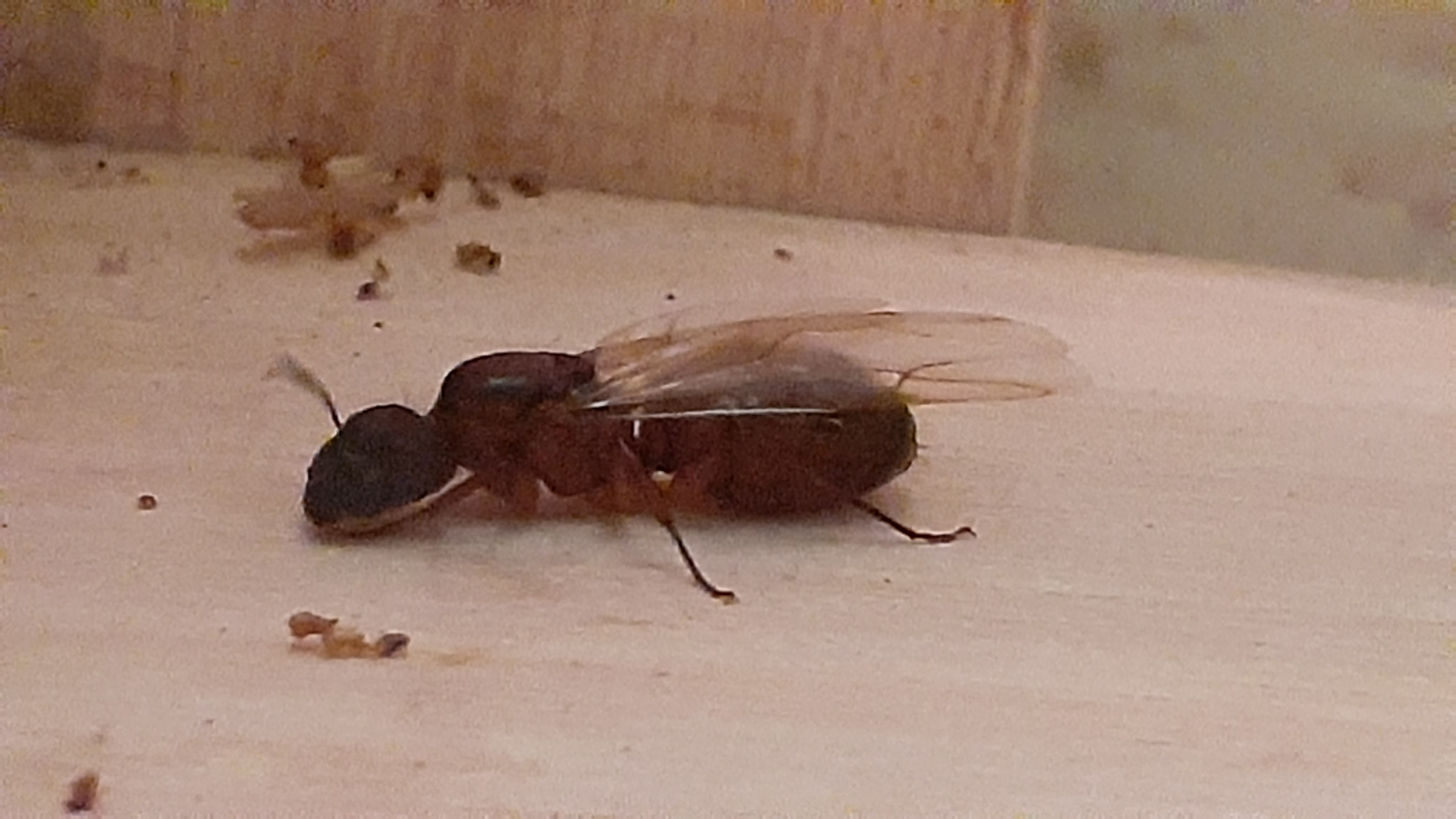La Hormiga Carpintera./ The Carpenter Ant.
Saludos amigos de los insectos del mundo, en esta entrega les compartiré unas imágenes de un insecto muy peculiar que no es más que la hormiga carpintera.
Greetings friends of the insects of the world, in this installment I will share some images of a very peculiar insect that is nothing more than the carpenter ant.

Author: @ysmael20
Este ejemplar, que cuyo nombre científico es ( Camponotus atriceps) es una hormiga carpintera y su tamaño es de unos 7 milímetros y con un color marrón oscuro en su cuerpo y su cabeza es de color negro , contando con un par de alas para volar.
This specimen, whose scientific name is (Camponotus atriceps) is a carpenter ant and its size is about 7 millimeters and with a dark brown color on its body and its head is black, with a pair of wings to fly.

Author: @ysmael20
La función natural de esta variedad de hormiga es que trituran la madera, para dar forma a sus madrigueras , para comer y como resultado producen gran cantidad de aserrin de madera que cuando cae al suelo sirve como nutriente, Para la próxima generación de árboles, esa sería una contribución importante para la naturaleza.
The natural function of this variety of ants is that they crush the wood, to shape their burrows, to eat and as a result they produce a large amount of wood sawdust that when it falls to the ground serves as a nutrient, For the next generation of trees, that it would be an important contribution to nature.

Author: @ysmael20
Estas hormigas son confundidas con las termitas ,por su preferencia por la madera, por lo tanto es considerada una plaga cuando están invaden estructuras de madera y causan daños.
These ants are confused with termites, due to their preference for wood, therefore it is considered a pest when they invade wooden structures and cause damage.

Author: @ysmael20
Bueno amigos de HIVE, espero que les guste mi publicación y recuerden que la naturaleza es hermosa y sabia, recuerden comentar y votar nos vemos para la próxima entrega.
Well friends of HIVE, I hope you like my publication and remember that nature is beautiful and wise, remember to comment and vote, see you for the next installment.
Camera: SAMSUNG GALAXY A20
Author: @ysmael20
Photographing: The Carpenter Ant.
Ragion : Central plains of Venezuela
Su post ha sido valorado por @goya
Gracias por el apoyo y comentario @goya .
Congratulations @ysmael20! You have completed the following achievement on the Hive blockchain and have been rewarded with new badge(s) :
Your next target is to reach 35000 upvotes.
You can view your badges on your board and compare yourself to others in the Ranking
If you no longer want to receive notifications, reply to this comment with the word
STOPPor sus alas también pudiesen confundirse con las hormigas voladoras de la lluvia. Saludos.
Buenas fotos amigo, es una hormiga reina, mejor dicho es una futura reina. Las hormigas que poseen alas solo son los zánganos (machos) y las futuras reinas o princesas; cuando llegan las épocas lluviosas tanto los machos como las futuras reinas salen de los hormigueros y se aparean en el aire, posteriormente ambos caen el macho muere y la futura reina busca un lugar donde hacer su propio nido, luego se quita las alas y comienza a colocar huevos.
La única función de los machos es aparearse.
Saludos @abneagro excelente comentario , gracias por aportar información de alta calidad !